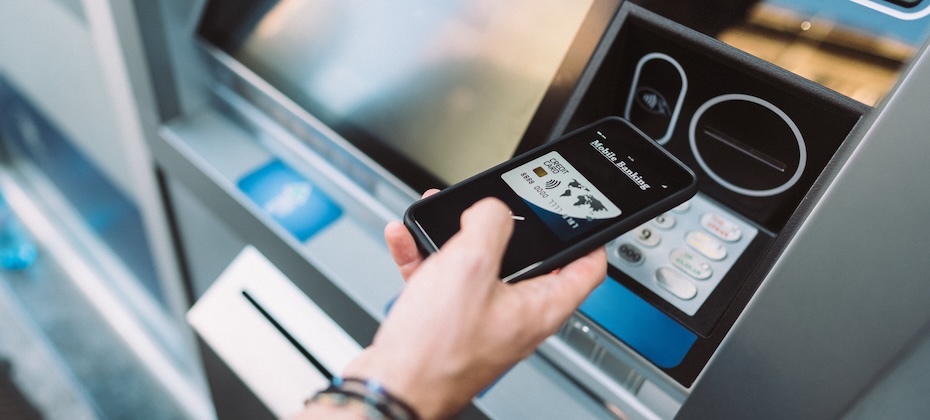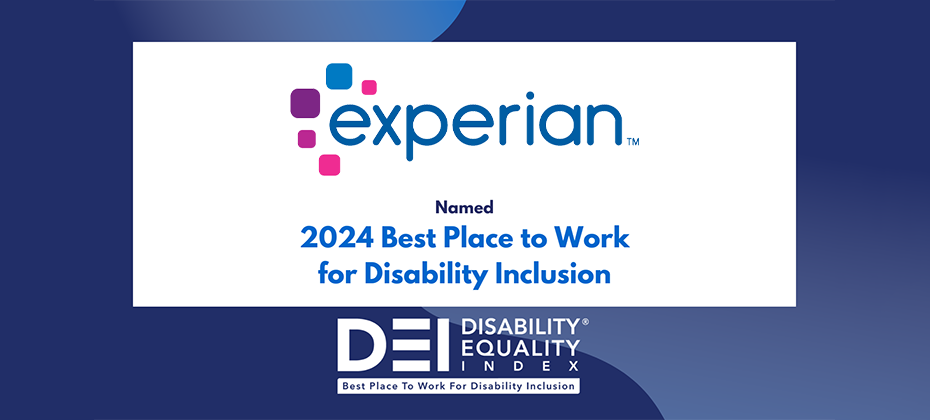At A Glance
At a Glance When an unknown printer took a galley of type and scrambled it to make a type 2ince the 1500s, when an unknown printer took a galley of type and scrambled it to make a type specimen book. It has survived not only five centuries, but also the leap into electronic typesetting, remaining essentially unchanged. It was popularised in the 1960s with the release ince the 1500s, when an unknown printer took a galley of type and scrambled it to make a type specimen book. It has survived not only five centuries, but also the leap into electronic typesetting, remaining essentially unchanged. It was popularised in the 1960s with the releaseince the 1500s, when an unknown printer took a galley of type and scrambled it to make a type specimen book. It has survived not only five centuries, but also the leap into electronic typesetting, remaining essentially unchanged. It was popularised in the 1960s with the releaseince the 1500s, when an unknown printer took a galley of type and scrambled it to make a type specimen book. It has survived not only five centuries, but also the leap into electronic typesetting, remaining essentially unchanged. It was popularised in the 1960s with the releaseince the 1500s, when an unknown printer took a galley of type and scrambled it to make a type specimen book. It has survived not only five centuries, but also the leap into electronic typesetting, remaining essentially unchanged. It was popularised in the 1960s with the release

With the New Year in full swing, it’s time to start turning thoughts to pulling together all the financial documents you’ll need to prep for tax time. A recent survey commissioned by Experian’s ProtectMyID shows that more and more consumers continue to file their taxes electronically – an estimated 81 percent of respondents plan to do so in 2015—but some are still unaware of the nature of tax-related identity theft (16 percent). Further, over half of those surveyed said that they prepare their taxes themselves (59 percent), and do so on their own home computer network – with nearly all indicating that they file from their personal desktop computer or tablet (91 percent). “Most taxpayers are now filing electronically so it’s important to know how to safely submit and save tax records, keeping personal information away from cyber thieves,” said Becky Frost, senior manager of consumer education for Experian’s ProtectMyID. Of course, another big question related to taxes is how much people anticipate they may receive back, and how they plan to spend what comes back their way from Uncle Sam. 83 percent of filers plan to receive a return of some kind, with the largest group of respondents (46 percent) saying their returns will be rolled back into either investments or a savings fund, with the next largest group (34 percent) using the funds to pay down their credit card debt. Taking that return check out for a shopping spree to kick up one’s wardrobe was a much less popular option, the leading choice for only 17 percent of those surveyed. Are you prepared to assemble your documents and submit your tax information by April 15? Learn more about how others plan to file safely—and how they plan to spend that return they plan on receiving—in the survey below. Experian ProtectMyID Tax Survey Report – January, 2015 from Experian_US This article is provided for general guidance and information. It is not intended as, nor should it be construed to be, legal, financial or other professional advice. Please consult with your attorney or financial advisor to discuss any legal or financial issues involved with credit decisions.

As many organizations look to turn data into actionable insight, a high degree of inaccurate information is limiting data insight and negatively impacting the bottom line. This is according to a new Experian Data Quality released today. On average, U.S. organizations believe 32 percent of their data is inaccurate, a 28 percent increase over last year’s figure of 25 percent. This high degree of inaccurate information causes 91 percent of respondents to believe revenue is affected by inaccurate data in terms of wasted resources, lost productivity, or wasted marketing and communications spend. This high level of inaccurate data comes despite the fact that organizations are investing in data quality. Eighty-eight percent of global companies have a data quality solution in place today and if we look ahead to the next 12 months, we see that 84 percent of companies plan to make some sort of data quality solution a priority for their business to implement for the first time or to improve upon. However, this investment is often segmented across various departments across the organization and most lack a centralized, complete data management strategy. Today we see that just one in four organizations has a sophisticated approach to data management. That lack of sophistication is driving up levels of inaccuracy and hurting the bottom line. “The cost of poor data quality is hitting home in boardrooms across the globe; most businesses, however, are perplexed because they actually are investing in data quality tools,” said Thomas Schutz, senior vice president and general manager for Experian Data Quality. “While data quality technology is certainly a requirement, many businesses have neglected to focus on staff and organizational structure. Very few organizations have appointed a centralized manager for data quality and most lack sophistication in their data management methods. Organizations need to do more than buy a new piece of software; they need to make data quality an organizational priority and put the right team in place to manage that complex effort.” The study also found that: Ninety-seven percent of U.S. companies feel driven to turn data into insight Ninety percent of U.S. companies have some sort of data quality solution in place today More companies who have enjoyed a significant increase in profits in the last 12 months manage their data quality centrally On average, U.S. respondents feel 27 percent of their revenue is wasted due to inaccurate and incomplete customer or prospect data To obtain a copy of The data quality benchmark report from Experian Data Quality, click here.

2014 was an eventful year: Republicans regained control of both the House and Senate in sweeping fashion, the European economy constricted dramatically, Russian economic sanctions brought the country to the brink of default, and China surpassed the United States as the world’s largest economy. And those are just a few of the year’s macro highlights. Yet despite this tumultuous time, the United States continued to demonstrate positive economic trends. As we look ahead, precarious global events and international uncertainties continue to raise some alarms, but domestic economic fundamentals appear strong enough to withstand external shock. In general, the U.S. economic recovery is on track to evolve into a full-fledged expansion. Business and Consumer Credit Conditions at Recovery Highs The American economy closed the 2014 books on a very different note than it started. Tough conditions last January and February had analysts, business owners and consumers questioning the economic progress of late 2013. Fortunately – with the subsiding of last year’s unusually harsh winter weather – employment, revenue, consumer spending and credit conditions all rebounded exceptionally. These events were particularly positive for small businesses in America, as witnessed by the following trends. Small business credit After years of difficulty obtaining credit, the small business credit spigot is reopening – outstanding credit balances grew by nearly 5 percent and are up 1.9 percent from a year ago. In the third quarter, small business credit conditions improved significantly, according to the Experian/Moody’s Analytics Small Business Credit Index. Nearly 12 percent fewer businesses filed for bankruptcy, and the share of credit balances being paid late fell to 8.8 percent – the lowest level ever tracked. The net share of small businesses that plan on raising employee compensation over the next three to six months is at a recovery high, and Moody’s Analytics expects the United States to reach full employment by the end of 2016. Consumer credit trends Positive consumer spending and credit trends are therefore beginning to emerge; the national average VantageScore rose two points over 2013. Some consumer highlights: Bankcards on the rise: Overall, the nation’s credit scores are up and bankcard and retail card lending is growing, according to Experian’s State of Credit report. Specifically, the number of bankcards per consumer rose 4.2 percent from 2013, and the number of retail cards rose 6.7 percent, according to Experian. Consumer comfort zone for loans is back: Consumers are increasingly becoming comfortable taking out loans to purchase big-ticket items. Use of home-equity lines of credit grew amid a resurging housing market in 2014, and delinquency rates remained steady. New loan originations throughout the year totaled $120 billion—up 27 percent from the previous year. This growth trend is expected to continue through this spring and summer’s buying season. Auto loans and higher education benefit from recovery: Car and student loans are also seeing a rise. Open auto loan balances reached an all-time high, with the majority of loans/balances in the super prime credit range. And in an analysis of student loan trends since the 2008 recession up through 2014, Experian found that student loans increased by 84 percent, surpassing home equity loans/lines of credit, credit card and automotive debt. Cross-Channel Marketing Remains Strong With the explosion of smartphones and digital tablets, marketers are seizing opportunities to reach key audiences in new ways, further strengthening America’s economy. Last year, 80 percent of marketers planned to run cross-channel marketing campaigns, and more than half planned to integrate their marketing campaigns across four or more different channels, according to Experian Marketing Services’ Digital Marketer Report. This fuels the economy by increasing the likelihood that consumers will make a purchase, as marketers can tailor offers to consumers’ specific needs. At the same time, it creates a strong need for data solutions to help marketers efficiently target their efforts. Ninety-three percent of companies have some sort of data-quality solution in place, Experian Data Quality found, but very few are calculating the return on this investment. Looking ahead, these businesses will need to calculate the return on their investments to document the economic value to their business – and we believe the outlook is strong for cross-channel marketing to continue to infuse energy into the American economy. Credit Uncertainties: Improved Housing and Consumer Spending Critical Many of 2014’s big uncertainties were resolved after the first few months of the year. Initial stagnation turned out to be the result of inclement weather, and the delay of the Affordable Care Act’s employer mandate for small businesses allowed companies more time to prepare for greater employee health costs. But domestic uncertainties remain. Given their deep roots in the U.S. economy, consumer spending and the housing market will need to continue to pick up to successfully accelerate growth throughout 2015. Small businesses depend heavily on consumer spending to operate, and while household finances are trending at recovery highs amid stronger hiring and lower unemployment, compensation and hours worked actually fell last fall. At the same time, the housing market recovery is still not broad-based, leaving the construction industry in flux and certain regions lagging in growth. In New England, the market has remained stagnant, and in Florida and Illinois, where the housing crash was disproportionately detrimental, key industries such as construction are among the worst in the country. Meanwhile, in the Mountain and Western regions, population and job growth in lucrative fields have driven a housing boom and healthy credit economy. Future Outlook Despite pockets of stagnation and global challenges, the U.S. economy is poised to see a full-fledged expansion in 2015. As the labor market tightens, employers will raise compensation, freeing up discretionary consumer spending that will prove critical to sustained economic growth. All told, expect upward trends in the economy to continue as 2015 swings into high gear. Lloyd Parker is Group President, Credit Services for Experian North America. He leads the sales and service teams for Experian’s Credit Services & Decision Analytics businesses.

Have you heard of #CreditChat? #CreditChat is an online discussion that happens on Twitter and YouTube every Wednesday at 3 p.m. ET. It's an educational and fun hour when we discuss credit and money issues with consumers, personal finance writers, academics, and financial organizations. We discuss a different financial topic each week; including credit scores, financial goal planning, saving money, reducing and eliminating debt, earning more money, and retirement. We also talk about fun topics like "How to Throw a Dinner Party on a Budget" and "How to Eat Healthy (Without Breaking the Bank)." We've been hosting these chats for two years – and we're excited to host our 100th chat this coming Wednesday. This week, we will talk about credit reports with Rod Griffin, our director of Public Education. Rod will be answering credit questions in a live Google+ hangout. If you've never attended our weekly chat, we'd love for you to join us. You can follow or join the Twitter conversation here – or watch the live streaming YouTube video.

Partnership with Experian Marketing Services will help Bare Necessities offer its customers a more seamless and rewarding experience across touch-points, including call-center support and email communications Bare Necessities, the largest online specialty retailer of women’s and men’s branded and designer intimate apparel and lingerie, entered into an agreement with Experian Marketing Services, a recognized leader in data-driven marketing, that will help the retailer better understand and engage with its customers. Using the Experian Marketing Suite, Bare Necessities has the ability to plan, manage, execute and optimize all of its customer interactions in real time across any channel, all from within a single system. “Customers choose Bare Necessities because we offer them a better way to buy bras,” said Noah Wrubel, cofounder and chief executive officer, Bare Necessities. “The Experian Marketing Suite will help us take that customer experience to the next level, a more personal level, and meet our customers’ expectations each and every time, regardless of the channel.” Experian Marketing Services’ awarding-winning platform integrates customer data from any source and channel into an always-fresh central repository so that responses and behaviors can be recorded in real time and immediately leveraged for more effective targeting, triggering and personalization of marketing campaigns. Comprised of three core capabilities, the Experian Marketing Suite is designed to help marketers identify their customers (Identity Manger), understand their customers (Intelligence Manager) and engage with their customers across channels (Interactions Manager). For example, the Interactions Manager is powering Bare Necessities’ granular segmentation strategy, giving the company the ability to target and deliver customer communications, such as email and direct mail, based on a customer’s unique body type, the products and brands he or she loves and how he or she likes to shop. Wrubel continued, “Bare Necessities customers don’t need to worry about awkward dressing rooms and overly anxious sales people when they are shopping for intimate apparel; they can just visit our site, call our bra-fit experts or chat with us online. One of the things that we’re most excited about in working with Experian is that we can give our bra-fit experts and customer-service staff access to the Interactions Manager within the Experian Marketing Suite. This capability allows us to have better conversations with our customers from the very beginning and remove any anxiety from the experience altogether.” Backed by the industry’s highest-rated client-services team, the Experian Marketing Suite is built with the scale and flexibility to support digital programs of any size and sophistication. Experian Marketing Services’ 30 years of data and marketing technology leadership have helped to position the Experian’s Marketing Suite as the world’s most flexible and comprehensive marketing solution with more than 10,000 of the world’s leading brands, in more than 30 countries, using the platform. For more information about Experian Marketing Suite, visit: http://bit.ly/1z0TpJr.

Just how loyal are consumers to a particular make or model of vehicle? A new Experian Automotive study answers this question by highlighting the loyalty behavior of consumers who got rid of their previous vehicle to purchase a new one. The analysis showed that, overall, Ford owners had the highest percentage of loyalty when returning to market, with 60.8 percent purchasing another Ford vehicle. Rounding out the top five makes with the highest percentages of loyal consumers were Toyota, Subaru, Kia and Lexus, with 59.1 percent, 57.7 percent, 57.2 percent and 55.9 percent returning to buy another vehicle of the same make. “Vehicle loyalty is an important industry metric because it tells automakers how successful their vehicles are with the general public,” said Brad Smith, Director of Automotive Market Statistics for Experian Automotive. “When analyzing loyalty, Experian Automotive uses disposal methodology, meaning we track when a consumer replaces a vehicle that he or she originally purchased new with another new vehicle. This approach creates a more direct correlation between a purchased and owned vehicle to provide automakers and dealers with insights that can become actionable with regard to production volumes, design changes or sales incentives.” The analysis also looked at the loyalty rates of some of the most popular vehicle segments on the road, including entry-level CUVs, full-sized pickups and small economy cars. The models with the most loyal consumers in each category include the Honda CR-V, the Ford F-150 and the Toyota Corolla, with 41.6 percent, 45.0 percent and 30.4 percent of their drivers returning to buy another vehicle of the same make and model. For more information about Experian insights into the automotive market, please visit ExperianAutomotive.com.

Experian Data Breach Resolution and BillGuard®, the leading personal finance security company, have launched a strategic collaboration to better protect consumers during an unprecedented era of identity theft. Responding to the recent wave of payment card breaches, the companies unveiled an advanced identity protection suite, combining BillGuard’s award-winning card fraud monitoring mobile application with Experian’s award-winning identity protection product, ProtectMyID®. A sharp increase in data breaches over the last several years has compromised the payment cards of millions of American cardholders. Fraudulent use of compromised credit cards and debit cards now accounts for more than 85 percent of all identity theft, which causes nearly $25 billion in financial damage in the U.S. each year . Unfortunately, financial institutions detect less than half of ECF, leaving cardholders to catch the rest – or personally absorb the financial loss. BillGuard’s popular mobile application utilizes crowdsourcing techniques and big data analytics to alert cardholders to suspicious transactions that have posted to their credit cards, debit cards and bank accounts. The app also sends data breach alerts if a cardholder has transacted at a retailer during a breach period and provides card location alerts when a card is used away from the owner’s smart phone, indicating the card is probably not being used by its owner. The new joint offering will allow consumers to access the ProtectMyID identity theft protection suite within the BillGuard app, along with the following BillGuard features: Card Fraud Monitoring and Alerts – Unlimited credit card, debit card, ATM and bank accounts monitored 24/7 for suspicious activity. Card Location Alerts – Alerts cardholders when their credit or debit card is used at a store or ATM away from them, using geolocation data from their mobile phone. Data Breach Monitoring and Alerts – Alerts cardholders when they have shopped at a merchant during a breach period, helping them immediately monitor their cards for fraud. Spend Tracking and Analytics – Helps consumers stay on top of exactly where their money is going with visual analytics and quick, email-like transaction review. Card Concierge – Cardholders can resolve billing inquiries and disputes with merchants directly from within the BillGuard app. For more information about BillGuard, visit BillGuard.com. If you are a ProtectMyID member, please download the BillGuard app today for free from the Apple or Google Play stores.

At Experian, we focus on helping consumers navigate and better understand the world of credit. Recently, we’ve made some changes within our consumer products. We’re excited to share all the developments we’ve been working on – not the least of which is the inclusion of offering our members their FICO® Scores using Experian data. FICO® Scores are used in 90 percent of credit decisions. They’re the credit scores that most consumers recognize as being most relevant. We know this because they told us. Consumers asked us about FICO because a majority of lenders use FICO® Scores as a factor in their credit decisions – and we heard them. It’s not just a FICO® Score that we’ll deliver to consumers as a part of these enhancements. A host of other product features are being added to pair the score that people trust with the resources they need to live knowledgeably, and own their financial futures. The enhancements bring together our identity fraud resolution assistance and best-in-class customer care agent support, combining them with new elements like score factors, educational information about FICO® Scores, and broad web accessibility to create immense new value for our members. People have asked us for more ways to understand their credit and track it when they’re on the go. We’re passionate about giving that flexibility, security and information to our members. They deserve it. Our consumer products help connect people with their credit so they can experience financial freedom in new ways. That’s what we’re continuously looking at: how to show all the ways that each person’s behavior shapes his or her credit, and create resources that help people make wiser decisions with it. Helping people find their credit inspiration—and affirming the value of their focus—isn’t easy, but it is important. That’s how we turn data into insights, and impact the lives of our members. They trust us to do just that, and maintaining their trust remains one of my top priorities. Bringing together Experian and FICO® as part of this update just makes sense. It helps us deliver an incredible asset to members wherever they are in their financial lives. Credit is truly a lifetime journey – and one where many have questions to ask of a trusted partner. Combining a FICO® Score with the detail of an Experian credit report is a natural evolution that helps keep our products strong, but we’re not done making improvements just yet. We’re ready to live the future with our members. We see it as a place where we’ll always be seeking new horizons to drive toward. There’s a lot to look forward to at Experian. And there always will be. Check out our official announcement here. Check out more on Experian Credit Tracker here. This article is provided for general guidance and information. It is not intended as, nor should it be construed to be, legal, financial or other professional advice. Please consult with your attorney or financial advisor to discuss any legal or financial issues involved with credit decisions.

Today, we are excited to announce that Experian has made it onto the Gartner Magic Quadrant for Data Quality Tools. We are positioned as a ‘Challenger’, which we believe means our organization is recognized as performing well within our line of expertise, providing customers with the right products and services they need to effectively manage their data. We believe this demonstrates our ongoing commitment to data quality across Experian and our success in providing customers across the globe with ‘business-user-friendly’ tools and expert advice to meet ever-more-challenging data needs. We focus on helping users across businesses, from IT to commercial business stakeholders, understand and leverage the valuable asset of data. We work hard to listen to our customers and build solutions that reflect: Ease-of-use – Products that can be leveraged quickly and effectively by business users outside of IT with the wider business objectives in mind. Flexibility – Deployment models that quickly enable a complete end-to-end data quality solution for businesses of all sizes. Expertise – Leading support through the implementation process and beyond. Value – Solutions implemented quickly to begin delivering value. We take pride in delivering these products across the globe and continuing to drive innovation in the data quality space, an increasingly growing and important sector of the market. Thank you to our customers and valued partners for helping make this position possible. We look forward to continuing to build strong data quality solutions for years to come. You can access the full Gartner report from our website. Disclaimer: This graphic was published by Gartner, Inc. as part of a larger research document and should be evaluated in the context of the entire document. The Gartner document is available upon request from Experian Data Quality. Gartner does not endorse any vendor, product or service depicted in its research publications, and does not advise technology users to select only those vendors with the highest ratings. Gartner research publications consist of the opinions of Gartner’s research organization and should not be construed as statements of fact. Gartner disclaims all warranties, expressed or implied, with respect to this research, including any warranties of merchantability or fitness for a particular purpose.

If you’ve driven a vehicle in the past few months, then you’ve most likely had to stop by your local gas station. And, if you’ve filled up the tank while you were there, then you’ve probably experienced the sensation of the corners of your mouth forming a smile as the price for a tank of gas of has been lower than usual for quite some time. With that said, has the consistent drop in gas prices done more than just make us smile? Has it enticed consumers to go back to the gas-guzzling, high-powered vehicles of the past? According to a recent Experian Automotive analysis, the answer is no. Despite the drop in gas prices, fuel-efficiency remains top of mind for most consumers. So much in fact, that more than 55 percent of all new vehicle sales through the third quarter of 2014 had four-cylinder engines. The next closest engine type was the six-cylinder, which made up nearly 30 percent of all new sales. What’s intriguing is that this gap has continued to widen since 2008. To download the full report: http://ex.pn/1x0r5q5 Furthermore, vehicles with four-cylinder engines made up 35 percent of all vehicles on the road, compared with six-cylinder engines, which made up 39.2 percent. While the more powerful engine has a larger share of vehicles on the road, the gap between the two has steadily decrease since 2009, when six-cylinder engines made up 41.4 percent, and four-cylinder engines made up only 29.9 percent. Other findings from the report include: • The total number of vehicles on the road grew by 5.8 million from a year ago, mainly due to an increase in new vehicle sales and low scrappage rates • More than 26 percent of all light duty vehicles on the road are model year 2010 or newer • The average age of vehicles on the road (15-year rolling age) is 7.4, down from 7.5 in the third quarter of 2013 • The Southern region saw the highest volume of new and used vehicle sales in the third quarter of 2014, followed by the Midwest, West and Northeast • Entry-level CUVs (cross-over utility vehicles) remained the top vehicle segment among new registrations through Q3 2014, while full-sized pickup trucks reclaimed the second spot after trailing small-economy cars through the first half of the year • Ford, Chevrolet and Toyota were the top three brands for new vehicles sales in the third quarter of 2014 • Ford (20.7 percent), International (17.1 percent) and Freightliner (15.8 percent) have the highest share of medium- and heavy-duty vehicles on the road

New research from Experian finds that nearly a third of all Americans use at least one type of smart or connected device; 14 percent of homes are smart homes. Experian Marketing Services published a new report today that tracks the recent rise and growing interest among consumers for connected devices and smart home products. A complimentary copy of the report, The Internet of Things: Opportunities through the rise in smart devices, can be downloaded here: http://ex.pn/1r0TJVp. The report found that consumer interest in three connected device categories has shown significant growth in recent years, with no signs of stopping. In fact, according to the report, nearly a third of all Americans use at least one type of connected device. Further, at least 14 percent of U.S. households are smart homes and have a connected home device such as connected lights, locks, thermostats, or electrical outlets, among others. Experian Marketing Services predicts that the smart home device category will see the most growth during the 2014 holiday season. Since the beginning of November 2014, interest in leading smart home devices has increased 54 percent. Percentage of growth in online search data since 2011 Percentage of growth in online search data during 2014 Holiday season Smart watches & fitness trackers 80% 45% Smart home devices 31% 54% Smart television devices 16% 47% Source: Experian Marketing Services “The rapidly growing trend of the Internet of Things manifested itself during the 2013 holiday season through the popularity of connected fitness trackers, but this year it is all about the emergence of smart home devices,” said John Fetto, senior analyst, marketing and research, Experian Marketing Services. “In fact, as smart home devices graduate from their niche darling status and become adopted and valued by a wider audience, we’re seeing greater recognition of leading category brands like Nest. In return, the growing familiarity with these leading brands is helping to drive awareness for the category overall.” Top 10 hottest smart home device products 4 weeks ending December 6, 2014 Rank Search term Share of top branded search terms 1 Nest thermostat 21% 2 Dropcam 12% 3 ADT Pulse 5% 4 Philips Hue 5% 5 Nest Dropcam 4% 6 Dropcam Pro 2% 7 Wemo 2% 8 Nest Protect 2% 9 Hue lights 2% 10 Drop cam 2% Source: Experian Marketing Services According to Experian Marketing Services, the consumers that are helping to push connected devices into the mainstream are a key segment to engage. Smart or connected device users, versus non-users, are generally younger, college educated and affluent. They are also more likely to be male, racially and ethnically diverse, and have kids at home. Further, users are highly connected, both technologically and socially, to their favorite devices and brands. Overall, they are more than twice as likely than the average U.S. consumer to access social media from different devices, to follow their favorite companies or brands on social media and be connected to the Internet at all times. The report also found that smart device users like to stand out in a crowd, are health conscious, driven to succeed and have a taste for the finer things. “As everyday things get smarter, consumers will grow more reliant on those things to process information and designated tasks autonomously. They will also allow consumers to ‘unglue’ their attention from computer, tablet and smartphone screens,” added Fetto. “While marketers may think there is still plenty of time before they need to address this nascent trend, or feel it won’t fundamentally impact their business, the rapid rate of growth in consumer interest strongly suggests that connected devices will be commonplace before marketers know it.” To download the entire report, please visit: http://ex.pn/1r0TJVp.

Black Friday has come and gone, and the holiday shopping season is in full swing. This year, retailers and economic experts alike have high hopes for robust spending and a needed economic boost. And so far the results look promising. On Cyber Monday, alone, the top online retail sites registered 242 million visits, followed closely by Black Friday’s 228 million visits. And according to a new survey from Experian Consumer Services, 36 percent of consumers plan to spend more on gifts this year than they did in 2013. At Experian, everything we do is about putting insights into action. This entails formulating and analyzing insights that can help both consumers and businesses alike. We sat down with two of Experian’s leading experts, one from the consumer side of the business and another from our marketing services business, to find out more about the key trends that will define this holiday shopping season. Guy Abramo, President, Experian Consumer Services and Matt Seeley, President, North America, Experian Marketing Services share their thoughts and insights below: Q: What kinds of shopping and spending patterns are you expecting to see this holiday season? Guy: We conduct consumer holiday shopping research to identify how people plan to make their purchases. Respondents report they plan to spend more than last year and fewer are using a budget. At Experian, we want people to better understand credit, so we commission meaningful research, and our findings can help people make more informed credit decisions. Matt: This holiday season, consumer economic sentiment is strong, according to data and insights from Experian’s Consumer Expectation Index (CEI). We’re also seeing consumers doing more of their shopping online, whether on a computer, tablet or right from their phone. This year, marketers are beginning to respond to this more receptive audience by ramping up their cross-channel marketing campaigns – and more importantly, making them personal. Ninety-one percent of global marketers will use email in their 2014 holiday marketing campaigns, and 40 percent of online adults will make a purchase because of a promotional email. But the companies that are really seeing results are those that are using personalization – adjusting messaging based on the customer’s purchases, demographics or preferences. Today’s consumer is more demanding than ever before. They want a consistent experience across channels, whenever and wherever they prefer, tailored to their unique desires. Compared to standard trigger mailings – emails in response to a customer’s actions or based on an event in his or her life – those that use personalization achieve a 147 percent increase in transaction rates. Q: What does this mean for consumers – and retailers – when the lights and tinsel come down in January? Matt: Well, for retailers and marketers it doesn’t have to mean anything different. Personalization is especially important during the holidays as consumers try to cut through an increasing volume of communication, but it’s critical all year round. This holiday season is a great reminder of how important it is to create meaningful connections with customers. Guy: And for consumers, a happy New Year requires smart celebrations in December. People have a tendency to overspend in December, only to feel overwhelmed in January when it’s time to pay their credit cards statements. We want all consumers to live credit confident and that means avoiding the temptation to throw away good spending behaviors, and instead, setting realistic, specific budgets and sticking to them. Q: So why does this data matter and where does Experian fit in? Guy: At Experian, we transform all this information on shopping habits and spending patterns into insights and advice that consumers and businesses can actually use. We provide data, but more importantly, we use this data to help consumers make better credit decisions. We’re helping shoppers protect their credit information, set sensible budgets and avoid potentially detrimental spending decisions that could put a dent in their credit scores. Matt: The holiday season is crunch time for our clients. Not doing well during the holidays could make or break a retailer’s business. That’s where our expertise in data comes in. We work with retailers to draw meaningful insights from their own data and third party data, like data from Experian Marketing Services that provides them with a complete picture of how their customers think, and what they do in a multichannel world during the holiday season. Further, our technology allows retailers to use that insight in real-time so they can tailor offers and messages in the moment that it matters most. This results in improved connections and engagement throughout the calendar year, and builds critical trust among consumers. Guy: Data is at the core of our business. We’re using that data for good to help Americans live credit confident and move both businesses and individuals forward. This holiday season, consumer confidence is up, and marketers are making meaningful connections with their customers. Additionally, a majority of Americans this year plan to charge their purchases on either a major credit card (48 percent) or a store credit card (22 percent), and another 17 percent plan to open a store credit card to purchase a holiday gift. And yet, only 38 percent plan to make a budget. The credit economy empowers consumers and gives them the means to fully enjoy this season and make meaningful purchases, but it’s important to make smart credit decisions. From everyone at Experian, we wish you a credit confident holiday season!











